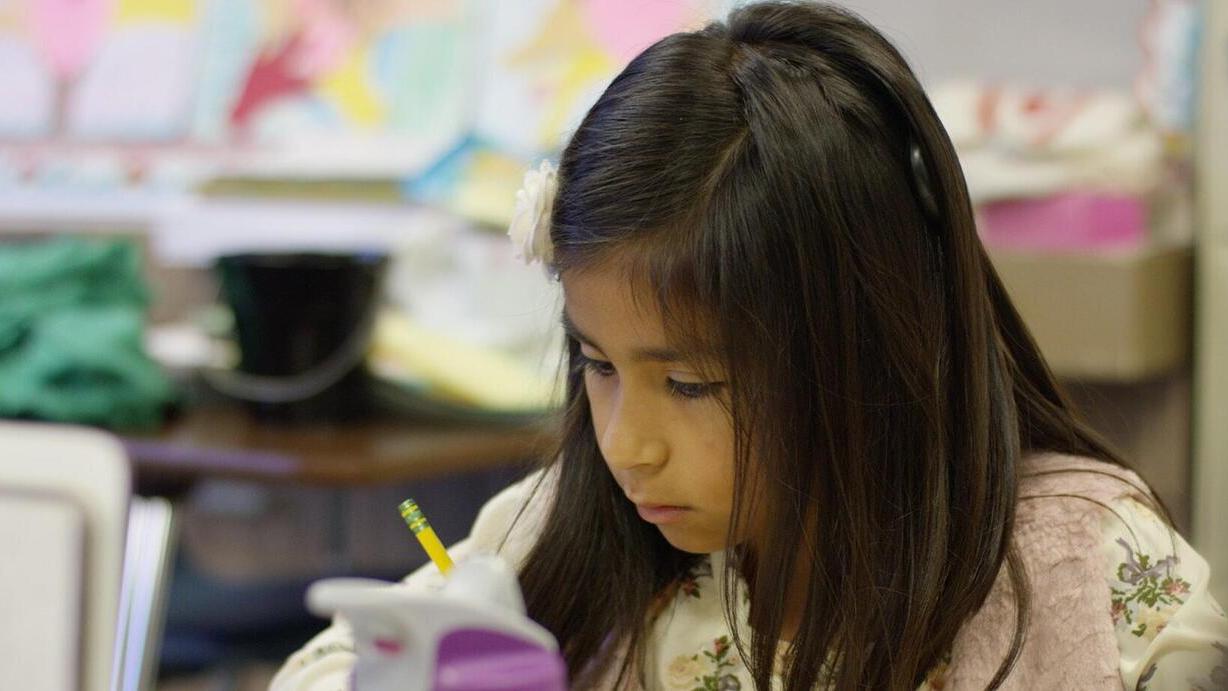School resource center
The Cochlear School Resource Center is designed to assist educational professionals, pediatric and educational audiologists with quick access to tools and material to meet the auditory accessibility needs of school-aged children*† with cochlear implants, an Osia® System, a Baha® System or significant hearing loss.

Parents & Caregivers

Listen, Learn and Talk: Parent/Caregiver Manual
Developing spoken language through listening for a child with hearing loss is an exciting process for everyone involved. As a young child with hearing loss learns to listen and talk there is a great sense of anticipation for you, the parent or caregiver, as they embark on the journey to learn to communicate.

Sound Foundation for Babies
This series will provide practical goals in the areas of audition, language and speech for babies 9-24 months. It provides parents and early intervention providers guidance in developing a child's spoken language through listening.

Sound Foundation for Toddlers
This series will provide practical goals in the areas of audition, language and speech for toddlers aged 24-48 months. It provides parents and early intervention providers guidance in developing a child's spoken language through listening.

Sound Foundation for Children
This series will provide practical goals in the areas of audition, language and speech for school-aged children. It provides parents, carers and educators guidance in helping to develop a child's spoken language through listening.

Pediatric Growth Chart (English and Spanish)
This chart describes speech and language expectations at different ages. Use it to be sure a child is on track or print out for use as a reference.

Mainstreaming Readiness
The decision to mainstream a child with a cochlear implant is a complex one that requires careful consideration of a number of factors, each of which contributes to mainstream success. Outlined below are important child readiness factors, receiving school readiness factors and parent readiness factors that will require consideration to make a mainstream recommendation with confidence.

Reading Skills
The critical role that well-developed spoken language plays in the development of literacy skills cannot be overstated. Thus, it follows that children with cochlear implants may bring skills to the reading task that might assist them, first, in learning to read and, later, in reading to learn. The following article explores the relationship between auditory access and the development of reading comprehension.

HOPE Fun and Games
Whether your child is home from school for the day, off on a vacation or just relaxing on the weekend, you may feel challenged to keep him or her busy with activities that will provide support for the development of speech, language and auditory skills. The "Fun and Games" series offers great resources for activities that will meet those needs. This brochure provides easy and practical ideas for helping your child learn and expand their language skills in a fun and engaging way.

Back to School Guide for Parents and Teachers
It's time to get back to school! Explore these simple tips and tools to help students thrive as they get back into the classroom.

Early Access to Sound Tear Off Pad
Hearing is the process of sound travelling through your child's ears, but it's actually their brain that interprets what they hear. Selecting the most appropriate hearing technology is critical to your child's success.

Early Intervention Counseling Tool
Is a child hearing their best? As an Early Interventionist, this resource provides you with a checklist of what to consider for children with hearing loss and how you can help a child with hearing loss experience a world a world of possibilities.
Speech and Language Professionals

Integrated Scales Development
The Integrated Scales of Development supports the monitoring and tracking of the child's development from birth to 48 months in the areas of: Listening, Receptive Language, Expressive Language, Speech, Cognition and Pragmatics.

The Whole World is a Classroom
For a child, the whole world is a classroom. Bring them closer to sound with Cochlear True Wireless™ technology.

LEAPing on with Language
This resource provides practical strategies to accelerate spoken language learning for school-aged children who have acquired simple sentences but need to move beyond into understanding and using increasingly complex language.

Progressive Hearing Loss in School Aged Children
Available resources and helpful tips for educators and parents to help recognize and treat progressive hearing loss in school-aged children.

Wireless Technology in the Classroom
A comprehensive guide to assist parents, teachers, educational audiologists and other school professionals in the selection, fitting and monitoring of assistive wireless technology for Nucleus® Cochlear Implant and Bone Conduction recipients.

Pediatric Loudness Scale
The pediatric loudness scale is designed to assist in discriminating soft from loud sounds for children.

Ling Sound Cards
These cards help you facilitate the Ling 6 Sound Test to check in on a child's ability to detect sounds and see if their hearing is giving them access to the full range of speech sounds.
Disclaimer
This material is intended for health professionals. If you are a consumer, please seek advice from your health professional about treatments for hearing loss. Outcomes may vary, and your health professional will advise you about the factors which could affect your outcome. Always read the instructions for use. Not all products are available in all countries. Please contact your local Cochlear representative for product information.
For a full list of Cochlear’s trademarks, please visit our Terms of Use page.
*In the United States, the cochlear implant system is intended for use in children 9 to 24 months of age who have bilateral profound sensorineural deafness and demonstrate limited benefit from appropriate binaural hearing aids. Children two years of age or older may demonstrate severe to profound hearing loss bilaterally. In Canada, the Cochlear Nucleus Profile Plus (CI600) Series and Profile (CI500) Series Implant Systems are intended for use in children 9 to 24 months of age who have bilateral profound sensorineural deafness and demonstrate limited benefit from appropriate binaural hearing aids. Cochlear Nucleus Freedom Series (CI24RE (CA) and (ST), and CI422) Implant System is intended for use in children 12 to 24 months of age who have bilateral profound sensorineural deafness and demonstrate limited benefit from appropriate binaural hearing aids. Children 2 years of age or older may demonstrate severe to profound hearing loss bilaterally for both series of implants.
†In the United States and Canada, the Osia System is indicated for children ages 5 and older. In the United States and Canada, the placement of a bone-anchored implant is contraindicated in children below the age of 5.
References
- Ling, D. (1989). Foundations of spoken language for the hearing-impaired child. Washington, DC: Alexander Graham Bell Association for the Deaf. Page 1.
